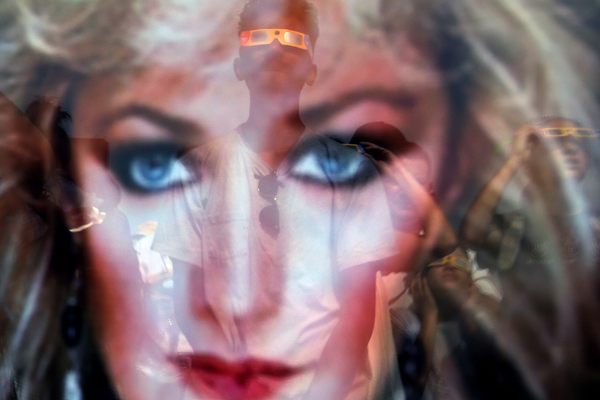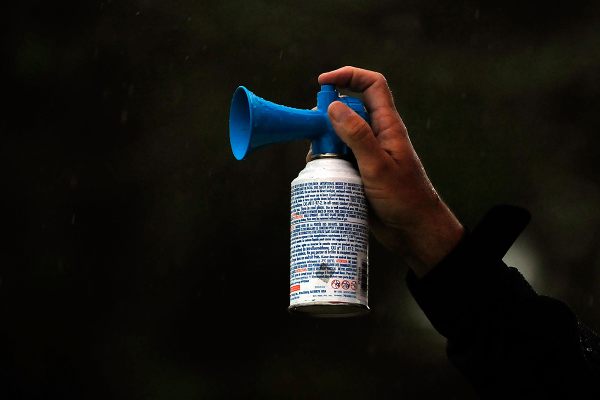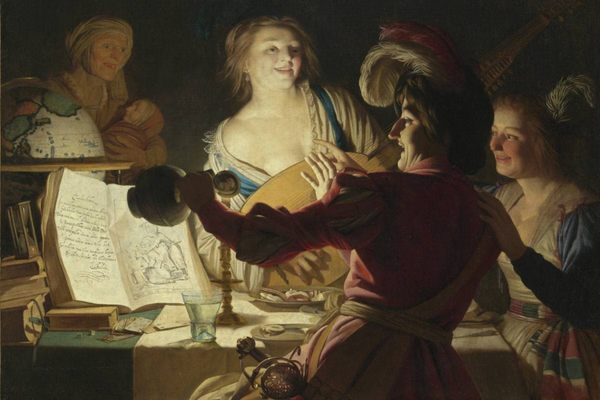The Fabulous History of JAZZ HANDS!
How jazz hands went from musical flourish to cat meme.
Whether or not you’re a musical theatre aficionado, you are probably familiar by now with the term “jazz hands” (or maybe “spirit fingers”). The motion of splaying your fingers, palms out, and shaking them like they’re fleshy sparklers has become a go-to move for creating a flashy finish, or simply to spice up any interaction.
It’s been incorporated into cheerleading and show choir routines (hello, Glee), been featured as a gag on shows like The Office and Archer, and become a cheerful meme, with countless internet cats putting up their little paws. But long before the motion became a cheeky shorthand for musical theatre nerds, jazz hands popped up in improbable places. But where did they really come from?
The exact origins of jazz hands are a bit murky, but as with most performative dance, it likely has its roots in African dance traditions. “I see one thread of it coming up through the African-American foundation of jazz dance, and that authentic jazz tradition,” says Rebecca Katz Harwood, Associate Professor of Musical Theater at the University of Minnesota, Duluth. ”In as much as vaudeville grows out of minstrelsy, that’s another step backwards on the family tree of jazz hands.”
It’s likely that the simple act of shaking your hands as part of the performance came into use when vaudeville performers began taking their cues from these traditions. As vaudeville began evolving into film, it brought jazz hands with it. Some people contend that jazz hands can be traced back to Al Jolson’s 1927 film, The Jazz Singer. In the film, Jolson plays a young man who defies his strict Jewish parents, and becomes a singer. The film is mainly remembered both for being the first ever “talkie,” with dialogue synchronized to the action, and also for Jolson’s incredibly offensive blackface minstrelsy. The performance numbers in the film, which were praised upon its release, are still somewhat unforgettable today (if you can get past the blackface).
Some of Jolson’s moves are reminiscent of what we would call jazz hands, with arms outstretched and hands extended pleadingly to the audience, but his moves lack the signature shake. “When I think of Al Jolson, I think of the blackface and the white gloves over his hands. And of course part of what those white gloves do is draw attention to the hands,” says Katz Harwood.
Even if his moves weren’t quite up to the jazz hands standard we have today, his use of hands as part of the act were a big step in that direction.
Of course, the man most closely associated with popularizing jazz hands is famed choreographer and showman, Bob Fosse. A prolific writer and director of stage and film musicals, including such classics as Damn Yankees, How to Succeed in Business Without Really Trying, and Chicago, Fosse often employed very precise and technical movements in his productions, including jazz hands. In fact, the opening sequence of his stage musical, Pippin, is almost nothing but jazz hands. As the production opens, the stage is dark, with the the only things illuminated being the performers’ hands. The full characters are slowly revealed as the introduction unfolds, but for a time the entire stage is nothing but jazz hands.
According to a 2013 Vanity Fair interview with Fosse biographer, Sam Wasson, Fosse was well aware of how campy his productions and dance moves were, jazz hands included. Speaking about how Fosse approached the production of Pippin specifically, “[…] his experience of Pippin was—What do I do with this hokey stuff? He turned it into something outrageous.” Outrageous as his handsy intro was, it proved to be a classic.
As Katz Harwood points out, the release of Pippin also helped popularize the move by being the first Broadway musical to advertise via a TV commercial. In the Fosse-directed TV spot, three dancers, known among musical theatre aficionados as the “Manson Trio” due to their glassy stares, do a simple dance that incorporates jazz hands at one point. This may have been one of the first times jazz hands were ever brought to the small screen.
Decades after Fosse’s embrace of the spirited move, it came to be associated with musical theatre and its fans. It was the kind of fabulous move you could break out to instantly identify yourself as a lover of the form. While it’s hard to pin down when exactly jazz hands worked their way into the mainstream cultural lexicon, a likely entry point was a scene in the 2000 cheerleading comedy, Bring It On.
In the infamous scene, the cheerleading squad is being trained by an unhinged choreographer named Sparky, who is trying to get them to do spirit fingers. When they don’t give him the appropriate amount of “spirit,” he loses control and smashes a stool to bits. It’s a funny scene, and for many viewers of the film, it sparked a view of jazz hands (spirit fingers, in the movie) as a hilarious movement that was taken ridiculously seriously in some circles.
Since Bring It On, jazz hands has achieved meme status, spreading the concept far and wide. Now it is understood by most as a funny gesture to express excitement or elation. But irony or no, the move is undeniably popular. And it’s not just a joke anymore either, with at least one Australian school advocating for jazz hands to replace clapping as a more sensitive show of appreciation for performers.
Jazz hands might be the biggest crossover influence musical theater has ever produced (sorry, Hamilton). As Katz Harwood puts it, “When you want movement that has maximum impact, and minimal skill requirement, jazz hands fit really well into those parameters.”
Whether you are a celebrity, a politician, or just some blogger, it’s always a good time for JAZZ HANDS!














Follow us on Twitter to get the latest on the world's hidden wonders.
Like us on Facebook to get the latest on the world's hidden wonders.
Follow us on Twitter Like us on Facebook